#shinshū
Photo

🥄🥗🌶🐮🍚🥢 昼餉 午餐 Lunch, #癸卯 #春分 #MAR #2023 ✿*:・ •̥̑.̮•̥̑ @ #すき家 #食其家 #SUKIYA, #氷鉋 #冰鉋 #Higano, #QNG, #信州 #Shinshū 🏞🏔, #JPN 🗾🇯🇵 … 麻辣もやし牛丼 麻辣豆芽牛肉蓋飯 Spicy bean sprout beef rice bowl ¥740._ ($5.70_, €5.30_) 💱 https://www.sukiya.jp/sp/menu/in/gyudon/111400/(在 すき家) https://www.instagram.com/p/CqM0hOGLOme/?igshid=NGJjMDIxMWI=
2 notes
·
View notes
Text
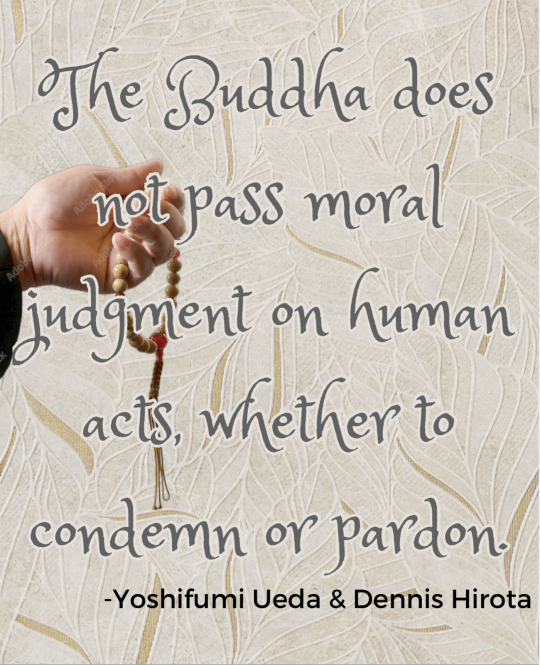
0 notes
Note
one time a jōdo shinshū monk said to me that che guevara was a bodhisattva, do you have any opinion on that?
That sounds made up as hell but I hope it wasn't
320 notes
·
View notes
Video
youtube
Pluto - Announcement PV
The anime adaptation of Naoki Urasawa and Takashi Nagasaki’s Pluto manga, the re-imagining of “The Greatest Robot on Earth” story arc from Astro Boy by Osamu Tezuka, will stream worldwide on Netflix in 2023.

Key visual
Messages from Naoki Urasawa, Takashi Nagasaki, and Macoto Tezka:

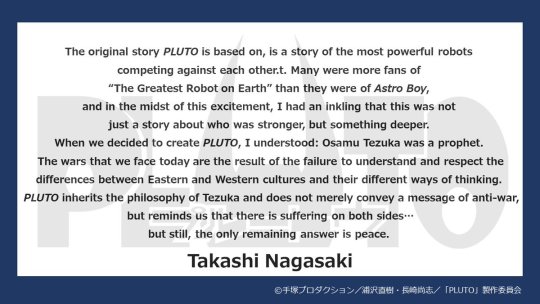

Cast:

Shinshū Fuji as Gesicht
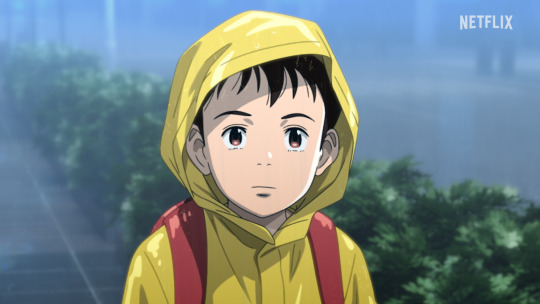
Yōko Hikasa as Atom
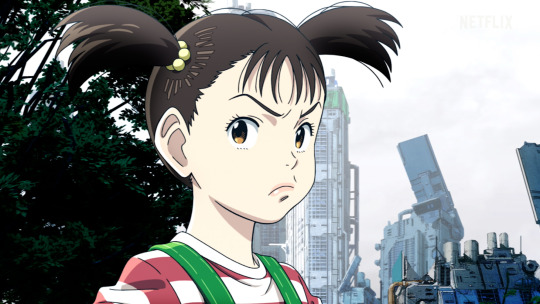
Minori Suzuki as Uran
Staff
Animation Production: Studio M2
Production Producer: Genco
#Pluto anime#Pluto#Pluto Netflix#Astro Boy#Naoki Urasawa#Takashi Nagasaki#Osamu Tezuka#Studio M2#Genco#Netflix#Anime#TV anime
674 notes
·
View notes
Text
Pluto: Netflix’s anime masterpiece explores how robots ‘feel’ when humans exploit them
by Thi Gammon, Research Associate in Culture, Media and Creative Industries Education at King's College London

There have been many TV shows and films inspired by the dual fear and excitement surrounding advances in artificial intelligence (AI). But not many exhibit such masterful craft and profound humanity as the new Netflix anime miniseries, Pluto.
Pluto is adapted from a manga series of the same title (2003-2009), created by Naoki Urasawa and Takashi Nagasaki. The manga version – considered a comic masterpiece for its beautiful art and sophisticated storyline – incorporated fundamental elements from Osamu Tezuka’s celebrated manga series Astro Boy (1952-1968), including the beloved android adolescent who was the titular character.
youtube
Pluto is set in a futuristic world in which humans and robots coexist, albeit within a hierarchy in favour of humans. Robots excel in various jobs ranging from nannies and butlers to architects and detectives, but they are treated as second-class citizens.
Although robots gradually gain their own rights codified into law, they are still exploited by humans, who downplay their worth and emotional intelligence. As much as humans depend on AI, they also feel threatened by it.
An AI murder mystery
Pluto, which has both Japanese and English audio versions, follows German robot detective Gesicht (Shinshū Fuji/Jason Vande Brake) as he traces the mysterious killings of robots and humans. The world’s seven most advanced robots (including Gesicht himself) and robot-friendly humans (including his creator) are the targets of this assassination scheme.
What’s most perplexing is that the murders appear untraceable. This suggests that the killer might be a very advanced robot, challenging the belief that robots can’t ever kill humans due to their programmed constraints.

This enigmatic case echoes the cautionary message found in Mary Shelley’s Frankenstein – beware of human beings’ ambitious dreams and creations. While the story begins as a murder mystery, it evolves into a thoughtful drama about the conflicted relationships between humans and androids.
While Pluto draws on many familiar sci-fi concepts, it distinguishes itself through its meticulous character development and the depth of its micro-stories. Every character is complex, and the audience is able to get to know them and become invested in their fates. The anime’s unhurried pace also allows viewers ample time to contemplate its philosophical questions about consciousness evolution and the powerful impacts of emotions.
Despite all its brilliance, however, the series is not without flaws. It has a dated representation of gender roles, with no female characters – whether human or robot – playing an important part. None of them break free from the stereotypical role of nurturing, stay-behind support for their exceptionally capable and powerful male partners.
Animation of the year
Pluto maintains a melancholic tone throughout – but despite this overarching dark ambience, it is at times romantic and moving. It exalts love, friendship and compassion without falling into sentimentality, evoking an emotional resonance reminiscent of Blade Runner (1982).
The series emphasises that life, or the process of living, imparts character and humanity, transcending biological organs and blood. Androids may initially be devoid of complex emotions, but they develop sentience through everyday experiences and interactions with fellow robots and humans.
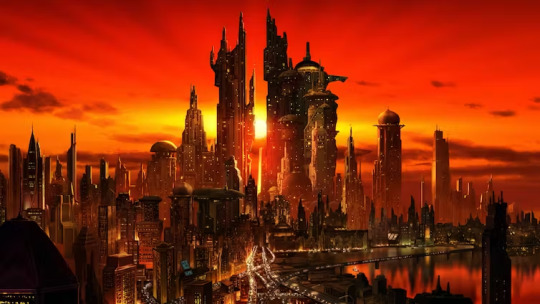
Robots can even learn to appreciate music, as manifested by the charismatic North No.2 (Koichi Yamadera/Patrick Seitz), who was designed for intense combat but grows weary of warfare. The narrative underscores the simultaneous beauty and danger of emotions – particularly the destructive force of wrath.
With great technological advancements and comfort, this futuristic world is still torn by war. It poses the question: “Will war ever end?” – reminding us of the conflicts and tragedies happening in the real world. The anime suggests that an end to war is unlikely as long as hatred persists.
For me, with its beautiful art and riveting narrative, Pluto stands out as one of the best Netflix productions of all time. It’s certainly the best animated work of the year.
#science fiction#futuristic#artificial intelligence#Netflix#anime#science fiction and fantasy#Pluto#sci fi anime#naoki urasawa's pluto#Youtube
16 notes
·
View notes
Text

𝐏𝐄𝐎𝐏𝐋𝐄 𝐈'𝐃 𝐋𝐈𝐊𝐄 𝐓𝐎 𝐆𝐄𝐓 𝐓𝐎 𝐊𝐍𝐎𝐖 𝐁𝐄𝐓𝐓𝐄𝐑!
tagged by: @jizzlords tehe thank you sweetpea 🥰💕❤️
tagging: @bubblybabins @notoriya @peacehunted @mariotime @kuraikyu @distortedkilling @gyofukuki @soulscursed @epitaffia @crocifissione @shihouiin @amoriscustos @constellationcrowned @antinomos @shokutsus @honoosenshi @quirofiliac @thusspoke @storybounded @fearbend @howthesleeplesswander @ravusnightblossom @ultdete @wxtchpilot @heedingcalls @bubblybabins @streetslost @tenacquity 🥞🍳❤️💕
alias / name: beckowsky / becky
birthday: 11th august
zodiac sign: leo
height: 165cm
hobbies: writing, drawing, singing, cosplaying, weight lifting, boxing, cleaning
favorite color: green and purple
favorite book: it's between coraline and the abarat series
last song: gentle breeze
last film / show: dungeon meshi
inspiration: aside from whatever canon material i am able to gather about her (and lord is it already super scarce, when compared to the rest of the basara cast) as well as the history about the ainu and Jōdo Shinshū,
i definitely take a lot of inspiration from other animes, especially of the magical girl genre (since her design is partially inspired by that).
i also take inspiration from other games (like sengoku musou, onimusha, nioh, okami and kuon), anime (sword of the stranger, samurai champloo, gintama), manga (vagabond, lone wolf and cub and kaze hikaru) of the samurai genre. honestly, she's just an absolute algorithm of almost random things by this point (with sandy cheeks from spongebob also being a part of it)!
story behind url: it's just one of her attack names, which translates into 'rolling snow', her original blog was named rollingsnowsmasher, which was a combination of this attack's name and 'namahage smasher'!
fun fact about me: i own way too many silly looking sunglasses including these

17 notes
·
View notes
Text
I was chatting with @digitalagepulao about this image of Nalakubara holding Heavenly King Vaisravana’s stupa and realized that I didn’t know when the bearer of the golden stupa/pagoda shifted from Nalakubara/Nezha to Heavenly King Vaisravana/Li Jing.
My first hypothesis was that this is a change exclusive to China as Buddhism spread and continued to develop/affect Daoism. If anyone has information on this change I’m more than happy to receive it.

Tang-period drawing preserved at the Ninna Monastery in Kyoto. May also be located within Taishō shinshū daizōkyō zuzōbu, volume 7, pages 566-567.
#li nezha#nezha#li jing#vaisravana#nalakubara#four heavenly kings#journey to the west#jttw#canonization of the gods#fsyy#buddhism#daoism
23 notes
·
View notes
Text
Unraveling the Mystery: 'Pluto' Season 2 and Its Ambiguous Fate
Introduction:
In the dynamic world of anime, 'Pluto,' the animated adaptation of Naoki Urasawa's acclaimed manga, held its ground as a reigning favorite on Netflix in 2023. Yet, the question that lingers in every fan's mind is whether 'Pluto' Season 2 is on the horizon or if it will gradually fade into the backdrop of obscurity. This article aims to dissect the intricate factors influencing the decision-making process while exploring the potential trajectory of this beloved sci-fi thriller.
The Renewal Quandary:
'Pluto' stands adorned with praise for its captivating storyline, mesmerizing action sequences, and visually stunning animation. However, an imposing obstacle obstructs the path to a second season—the anime has exhaustively covered the source material derived from Urasawa's manga. With 65 chapters and eight volumes spanning from 2003 to 2009, the absence of a sequel from the creator introduces an air of uncertainty regarding Netflix's green light for another season.
Navigating the Netflix Landscape:
Netflix, renowned for its thorough evaluation of metrics before renewing a series, confronts a distinct challenge with 'Pluto.' Despite the undeniable popularity of the show, the scarcity of fresh source material casts doubts on a seamless continuation. In an industry where swift renewals and abrupt cancellations are commonplace, the destiny of 'Pluto' teeters on the precipice.
Revealing the Intricacies of the Narrative:
'Pluto' thrusts viewers into the world of Gesicht, a robot detective with Europol, on a global quest to unravel a series of deaths impacting both humans and robots. The deaths share a peculiar thread—anomalous objects resembling horns inserted into the victims' heads. The plot gains complexity as evidence suggests the unprecedented possibility of a robot committing these crimes, marking the first instance in eight years.
Potential for Narrative Exploration:
Within the realm of uncertainty, a glimmer of optimism persists for fans yearning for 'Pluto' Season 2. If Netflix chooses to give the green light, the series might embark on alternate narrative avenues. This could involve exploring a different era or presenting a prequel, injecting a sense of freshness and intrigue into the storyline for avid viewers.
The Ensemble and Eager Expectations:
The exceptional cast, featuring Shinshū Fuji as Gesicht, Hiroki Yasumoto as Mont Blanc, and Mamoru Miyano as Epsilon, undeniably contributed to the success of 'Pluto.' Should the series secure a renewal, fans can eagerly anticipate the return of these talented actors, resurrecting their beloved characters with newfound vigor.
In Summation:
The heightened anticipation surrounding the uncertain fate of 'Pluto' Season 2 keeps fans on the edge of their seats. While the scarcity of new source material poses a formidable challenge, the undeniable popularity of the series may propel Netflix to explore innovative possibilities. Until an official announcement shatters the silence, the destiny of 'Pluto' Season 2 remains veiled in uncertainty, intensifying the suspense for the passionate anime community eagerly awaiting its resolution.
3 notes
·
View notes
Text
CH. 21 NOTES
⚠️ First, I should preface these notes by saying my knowledge on Buddhism could be entirely incorrect and misinformative. IF I HAVE ERRORED, PLEASE LET ME KNOW!! I am not above or against criticism. In fact, I welcome it immensely. Thank you.
⭐️1.) I have included some facts about orchids from Adriana Picker’s book, “Petal: The World of Flowers Through an Artist's Eye.” This book is fantastic and makes for a great gift idea. The artwork is so aesthetically pleasing. I’ll show some pictures on the Discord server.
⭐️2.) Dishes found in “The Official Downton Abbey Cookbook” by Annie Gray.
⭐️3.) This is not the ‘gotcha’ question Hannah thinks it is. Here she is unknowingly paraphrasing from the first century biography of the Buddha called the Buddcharita written by the Indian poet Ashcaghosa (Clark, 61-62). This biography is believed to record the Buddha’s final actions, however, it is not a sūtra. In Mahāyāna Buddhism there are said to be two influential sūtras detailing the final teachings and death of the Buddha: The Mahāparinirvāṇa Sūtra and the Lotus Sūtra. Both these religious texts are believed to record the Buddha’s final days, but for many Mahāyāna Buddhists - and I’m thinking specifically of the Japanese schools - the Lotus Sūtra contains the highest and most valuable final teachings of the Buddha. Tendai schools stress the superiority of the Lotus Sūtra, believing all other Buddhist sūtras as being, in some categorical way, inferior. However, this does not mean the Mahāparinirvāṇa Sūtra is whole-heartedly discarded from the Tendai canon: “…the Buddha preached the Mahāparinirvāṇa in order to stress his permanence for those who were too slow to grasp sufficiently the teaching of the Lotus Sūtra.”(Williams quoting Hurvitz, 156-157).
Clark, Anthony E. Catholicism and Buddhism: The Contrasting Lives and Teachings of Jesus and the Buddha, 2018, pp 60-61. Cascade Books.
Willliams, Paul. Mahāyāna Buddhism: The Doctrinal Foundations, 1989, pp 156-157. Routledge.
For the sake of theoretical argument, let’s pretend Satoru explains these nuisances to Hannah amidst their conversation.
⭐️4.) It goes without saying, but differing Christian teachings on the Eucharist/Holy Communion are very important when discussing the distinctions between Catholics, Protestants, and Eastern Orthodox. They all disagree to a certain extent. Basically it goes like this:
CATHOLICS: Believe in ‘transubstantiation,’ where the bread and wine during Mass undergoes a metaphysical change, becoming the actual body and blood of Christ (substances), while retaining the physical ‘accidents’ of real bread and real wine. Not merely a symbol.
PROTESTANTS: (And I use Protestants sparingly here because Protestant theology varies widely) Essentially upholds that the bread and wine do undergo some type of change, but reject the belief they ‘transubstantiate’ into the actual body and blood of Christ. The bread and wine are taken as symbols and no more.
EASTERN ORTHODOX: Agree with the Catholics that yes, the bread and wine do become the actual body and blood of Christ during consecration, but do not call it ‘transubstantiation.’ This change is a mystery and is therefore beyond human comprehension.
For the sake of theoretical argument, let’s pretend Hannah explains these nuances to Satoru amidst their conversation.
ADDITIONAL NOTES ABOUT THE GOJO FAMILY'S BUDDHISM: Much to my ignorance, I chose Jōdo-Buddhism as the Gojo family’s faith not realizing the long and arduous history of how it first came to be. Essentially there are two main Buddhist schools practiced in Japan (three if you count Zen as its own separate school). These schools are Tendai and Jōdo-shū/Jōdo-Shinshū, with Jōdo-Buddhism being the most widely practiced. However, I’ve already mentioned before that the real Gojo family were (are) not only descendants of Michizane Sugawara, but also aristocrats. Depending on when the Gojo lineage first started, this would indicate they were probably practitioners of Tendai Buddhism, as Tendai not only pre-dated Jōdo, but was only accessible to the noble classes since the peasants couldn’t read or write. When Michizane was later accused of favoring Prince Tokiyo over the crown prince, he was forced into exile and died two years later in 903. However, it is not abundantly clear how close the Gojo line was to Machizane’s direct bloodline at the time, or whether they were exiled along with him. Although, the Gojo family were listed as ‘viscounts’ during the Meiji era (1868-1912), which was considered the lowest rank of Japanese peerage. So either they were exiled for a time and later allowed back into the fold (possibly to assuage Michizane’s vengeful spirit), or they were never exiled and it was only Michizane immediate descendants who got punished??? The Meiji era also sought to abolish Buddhism for Shintoism, so perhaps we can broadly stretch our imaginations and pretend the Gojo line (as Akutami shows it), somewhere, somehow, switched from following Tendai to Jōdo-Buddhism during this unstable religious period. Why? I’ll let you decide. (Please note that I have nothing against Tendai. I literally Google-searched the most popular Buddhist schools in Japan and Jōdo was the first to pop up. I don’t have a strong opinion one way or the other).
DIFFERENCES BETWEEN TENDAI AND JODO.
Tendai and Jōdo agree on many things, but here are the primary differences as I (a non-Buddhist) see it.
JAPANESE FOUNDERS
(We could take the easy way out and say ‘the Buddha’ but I’m thinking more as it relates to different schools.)
Tendai: Saichō (767 - 822) with Nicherin (1222-1282) being a huge influence centuries later.
Jōdo-shū: Hōnen (1113 - 1212) ex-Tendai monk.
Jōdo-Shinshū: Shinran (1173 - 1263) disciple of Hōnen. Also an ex-Tendai monk.
RELIGIOUS TEXTS
Tendai adheres primarily to the Lotus Sūtra.
Jōdo-shū/Jōdo-Shinshū adheres to three sūtras: The Larger Sukhavativyuha Sūtra, Meditation Sūtra (Amitavur Dhyana Sūtra), and the Smaller Sukhavativyuha Sūtra. (The Lotus Sūtra can also be included).
BUDDHAS
Tendai: Sakyamuni Buddha (though Lotus Sūtra mentions many other buddhas, including Amida.)
Jōdo-shū/Jōdo-Shinshū: Amida Buddha.
DOCTRINAL TEACHINGS
1. Tendai: Self Power - You alone can reach enlightenment.
1. Jōdo-shū/Jōdo-Shinshū: Other Power - You cannot reach enlightenment on your own in your current human state, and need the guidance of another power (Amida Buddha). ⭐️ It should be noted that Jōdo practitioners believe Amida was given this ability thanks to Sakyamuni Buddha.
2. Tendai: Can reach buddhahood in this life.
2. Jōdo-shū/Jōdo-Shinshū: Cannot reach buddhahood in this life and must wait upon entering the Pure Land in the next life with the help of Amida.
HOW DOES SATORU VIEW HIS BUDDHISM?Only Gege would be able to answer this question to the extent Satoru takes Buddhism seriously. For GTAW, I’ve written him with a mixture of Buddhist thought. On one hand, I’ve incorporated an historic element where Satoru’s family have been practicing Jōdo-Buddhism for almost two centuries, however realistic that sounds. But how personally devoted is he to Amida Buddha? ¯\_(ツ)_/¯ Don’t know. While it’s true I have him reciting the nembutsu and he hasn’t discarded his family’s Amida butsudan, I haven’t delved too deeply into his faith. I can picture him liking Hōnen and Shinran’s simplicity in teaching the Dharma and their criticisms of the elite upper classes, but I’ve also written him quoting from thirteenth-century Tendai mystics like Kenkō (1283–1350) and expressing a desire to live as a hermit up in the mountains, which is more of a Tendai aesthetic. And the fact he unearths the truth about cursed energy (ie, enlightenment) seems to suggest he has proven that enlightenment can be achieved in one’s current lifetime and does not require Other Power. Or perhaps it is because of Other Power that he was able to reach enlightenment in this lifetime, where he will then be reborn in the Pure Land in the next life? Anyway, this is just my opinion. For all we know he doesn’t give a hoot about religion. I’ll leave these interpretations to you, the reader. My brain hurts enough as it is.
3 notes
·
View notes
Text
Tokyo-Kontrastprogramm
Als erster Tagespunkt stand heute der Check-Out an. Wegen der anderen Gäste im Schlafsaal hatte ich mein Wecker nur auf Vibrieren eingestellt. Bisher bin ich trotzdem immer davon aufgewacht, bis auf heute... 😅 Der Check-Out war bis um 10 Uhr möglich, danach hätte man etwas drauf zahlen müssen. Zum Glück habe ich dann um kurz nach 9 Uhr spontan auf mein Handy geschaut. Somit musste ich mich nicht komplett stressen und konnte checken, ob ich alles dabei habe. Im Nachhinein war ich aber doppelt froh, dass ich meinen großen Rucksack bereits über den Gepäcktransport an meine neue Unterkunft liefern ließ.
Nach dem erfolgreichen Check-Out stellte ich beim Verlassen des Gebäudes fest, dass der angekündigte Regen bereits voll im Gange war. Der Weg zur Bahnstation war aber nicht weit und danach war ich zumindest für die größte Zeit sowieso mit dem Zug unterwegs oder im Bahnhofsgebäude. Dementsprechend konnte ich mich mit dem Regenwetter schnell abfinden. Eine Sache ist mir aber direkt aufgefallen: Regenschirme > Regenjacken oder Ähnliches. Da ich mich auf meine neue Regenjacke verließ, hatte ich keinen Schirm dabei. Damit war ich jedoch so gut wie der Einzige, da ansonsten jeder unter einem Schirm Schutz vorm Regen suchte.
Mit der Bahn ging es dann erstmal zum Hauptbahnhof in Tokyo. Dort konnte ich mir meinen JR-Railpass-Gutschein zum richtigen Ticket umtauschen lassen, welches für 21 Tage gültig ist. Damit darf ich alle JR-Linien und so gut wie alle Shinkansen-Strecken fahren. Für den Stadtverkehr lohnt sich das Ticket noch nicht wirklich, da U-Bahnen und spezielle Bahnen nicht zum JR-Verbund gehören. Dementsprechend habe ich bis zu meiner ersten Shinkansen-Fahrt darauf gewartet. Mit dem JR Hokuriku Shinkansen gelangt man von Tokyo nach Kanazawa, dem Ort meiner nächsten Unterkunft.
Eigentlich wollte ich auf dem Weg dorthin einen Zwischenstopp in Kairuzawa machen. Leider habe ich erst später festgestellt, dass die von mir gewählte Verbindung dort keinen Halt macht. Dementsprechend änderte ich meine Planung etwas und machte Halt in Nagano, wo ich eigentlich auf dem Rückweg vorbeischauen wollte. Die Shinkansen-Fahrt lief sehr gemütlich ab. Man muss nur etwas darauf achten, dass man in den richtigen Waggon einsteigt. Es gibt extra Waggons für reservierte Plätze, nicht reservierbare Plätze und Premium-Plätze. Wie ich dann aber noch festgestellt habe, kann ich mit dem JR-Railpass kostenlos immer einen Sitzplatz reservieren. Das erscheint mir sehr nützlich, vor allem wenn der Zug irgendwann mal etwas voller sein sollte. Bei meinem Halt in Nagano hat der Regen leider noch nicht abgeklungen, weshalb ich meinen Aufenthalt bereits im Voraus kürzer zu gestalten. Ich hätte mir gerne Teile der Olympia-Sportstätten von 1998 angesehen, aber diese waren leider etwas außerhalb und waren selbst mit der Bahn über eine Stunde entfernt. Ich entschied mich somit nur für einen Besuch des Tempels Shinshū Zenkō-ji. Durch den Regen wanderte ich circa eine halbe Stunde, wobei die letzten paar Meter durch die schöne Zenkoji Nakamise Straße führten und man immer mehr das prächtige Tempelgelände erahnen kann. Meine neue Regenjacke hat den Qualitätscheck auf jeden Fall bestanden und ich war erstaunt, dass meine Socken auch so gut wie trocken geblieben sind.
Wegen des Regens entschied ich mich für ein Ticket um das Tempelinnere zu betreten. Dabei hatte ich eigentlich etwas anderes erwartet, als es im Endeffekt war. Nachdem man sich die Schuhe auszog lief man in Richtung des Tempelaltars und konnte dann eine Treppe in gefühlt komplette Dunkelheit hinabsteigen. Zwar gab es eine englische Erklärung, aber mir wurde erst klar auf was ich mich eingelassen habe, als es keinen Weg zurück gab 😂 Der Gang war stockfinster und man konnte maximal durch Teelichter erkennen, ob diese durch jemand verdeckt wurden oder nicht. Man konnte sich nur durch Tasten in dem Tunnel fort bewegen. Vor dem Hinabgehen wird man auch darauf hingewiesen, alles aus der rechten Hand zu nehmen und mit dieser die Wände abzutasten. Man lief dann einen kleinen Rundgang und auf der Mitte des Wegs war ein Griff, welcher auch als "Türschloss zum Paradies“ bezeichnet wird und beim Berühren, die Erleuchtung ermöglichen soll. Die Stimmen der Besucher vor mir beruhigten mich ein wenig, auch wenn ich echt nicht für solche Sachen gemacht bin. Aber damit hat sich der Ausflug nach Nagano auf jeden Fall schon gelohnt gehabt. Nach dem Verlassen des Tempelgeländes ging es dann wieder Richtung Bahnhof und mit dem Shinkansen weiter nach Kanazawa.
Dort angekommen, war der Regen zum Glück abgeklungen. Um nicht 30 Minuten zur Unterkunft laufen zu müssen, wollte ich die Buslinie nehmen. Das stellte sich aber als gar nicht so einfach heraus. Erstens konnte ich mit Google Maps und den Angaben an den Bushaltestellen zunächst nicht wirklich 100% ermitteln, welche jetzt die richtige Linie ist, und zweitens stellte ich dann im Bus fest, dass meine Suica-Card hier nicht funktioniert. Am Schalter wurde ich dann aber freundlicherweise aufgeklärt und mir wurde die einzige Buslinie gezeigt, bei der man auch mit der Suica-Card zahlen konnte. Diese hielt dann auch an meiner gewünschten Haltestelle und von dort aus machte ich mich dann auf zum Hotel, wo ich ohne Probleme einchecken konnte. Im Vergleich zu meiner Kapsel in Tokyo habe ich mein Unterkunftsverhältnisse auf jeden Fall verbessert. Von einer Matratze in einer Minikapsel zu zwei großen Einzelbetten in einem kleinen Raum. 😂 Mein Gepäck hat es glücklicherweise auch von Tokyo nach Kanazawa geschafft und wartete bereits auf mich in meinem Hotelzimmer. Nach ein wenig Entspannung raffte ich mich nochmal auf, damit ich den Abend nicht im Hotel vergeude. Ich machte einen Spaziergang das Gebiet um meine Unterkunft herum und bewegte mich schon einmal Richtung Burg und den dazugehörigen Gärten. Wie ich schon vermutete, waren diese aber um diese Zeit abgesperrt und ließen keine schönen Nachtbilder zu. Wenigstens konnte man teilweise die beleuchteten Außenmauern betrachten. Fast keine Menschenseele außer mir war hier unterwegs, weshalb ich mich schon hinterfragte, ob ich überhaupt im Zentrum Kanazawas bin. Als ich mich dann aber einer Straße voller Restaurants, Bars und Nachtclubs näherte, war ich dann doch wieder von ein paar Menschen umgeben. Im Vergleich zu Tokyo war es dann aber trotzdem ein Riesenunterschied. Ich bin gespannt, wie es am morgigen Tag aussieht. Ich drehte noch eine weitere Runde und verspeiste nach langem Überlegen, was ich essen soll, eine Portion Takoyaki. Da es schon spät war, war ich mir nicht sicher, wie lange die Küchen der Restaurants noch offen haben. Außerdem hatte ich nicht so großen Hunger, weshalb mir die Takoyaki-Portion ausreichte. Ich bin gespannt, ob ich ohne die Geräuschkulisse aus dem Kapselhotel überhaupt richtig schlafen kann.
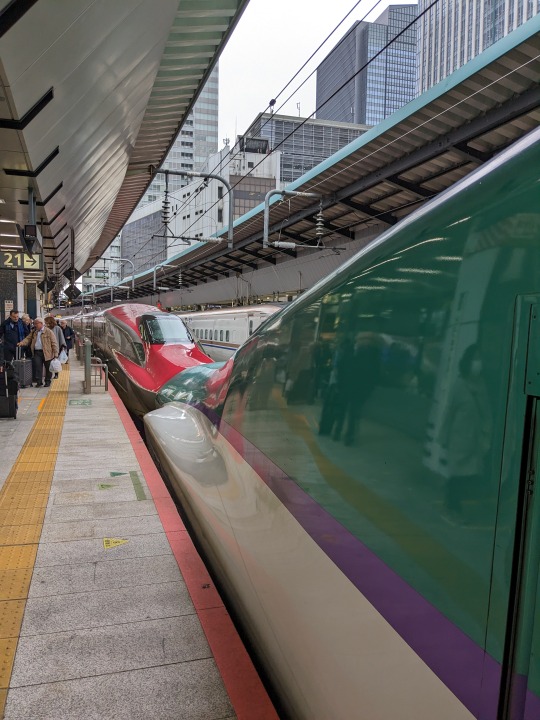







4 notes
·
View notes
Text
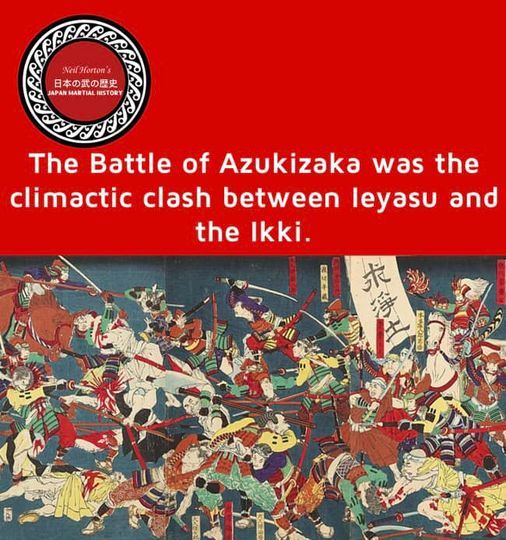
One way to another
Organized by Professor Hongan of the Jodo Shinsen, Hongan, religious autonomy formed by Buddhist monks, samurai, peasants, and merchants. Locally strong religious organizations were formed by the indigenous samurai samurai people who gathered in autonomous rural villages and temples belonging to the Hongan Prefecture sect, which follow the doctrine of "the security of the present generation is to rely on the Hongan and trust in the entourage of the Honganji sect."
In 1488 (2 years of longevity), Kato showed its charm to the world by destroying the wealthy parents. At the end of the Sengoku era, until it was healed by Nobunaga Inada, etc., there was a stable bridge built everywhere. Since the main areas of Yokohama, Ise Nagashima, and the Miura Sakura River Basin, were considered to be landmines, it is believed that there was advanced water treatment technology.
However, in 1580 (Tenjo 😎, after Yoshiki withdrew from Ishiyama Hongan Station after losing the battle with Nobunaga, the name of Hongan Station was no longer seen because of the division of Hongan Station. In March 1582, the last peak of the Kato Ichinomiya Line, Tsugoshi Castle fell and ended.
(Ikkō-ikki (一向一揆, "Ikkō-shū Uprising") were rebellious or autonomous groups of people that were formed in several regions of Japan in the 15th-16th centuries; backed up by the power of the Jōdo Shinshū sect of Buddhism, they opposed the rule of governors or daimyō. Mainly consisting of priests, peasants, merchants and local lords who followed the sect, they sometimes associated with non-followers of the sect.
Towards the end of the 16th century, however, their growing numbers and strength caught the attention and concern of the great samurai leaders of the time. Tokugawa Ieyasu worried that sōhei of Mikawa Province would rise up and seize the province. In 1564, his forces, with the help of Jōdo-shū sōhei, defeated the Mikawa Ikkō-ikki in the Battle of Azukizaka).
8 notes
·
View notes
Photo

この映画を観ました。 觀看這部片了。 Watched this film. #癸卯 #春分 #MAR #2023 ✿*:・ •̥̑.̮•̥̑ @ #グラシネ #大戲院 #GrandCinemas 🎥, #QNG, #信州 #Shinshū 🏞🏔, #JPN 🗾🇯🇵 ... 🎞🎬 #すずめの戸締まり #鈴芽之旅 #SUZUME https://suzume-tojimari-movie.jp ¥1,200._ ($9.20_, €8.40_) 💱(在 長野グランドシネマズ) https://www.instagram.com/p/CqILB9Hr-j1/?igshid=NGJjMDIxMWI=
1 note
·
View note
Text

0 notes
Photo

"Principles for Jōdo Shinshū Social Engagement" by Jeff Wilson
Journal of Buddhist Ethics
"Despite omission from much of the record of scholarship on Engaged Buddhism, Jōdo Shinshū Buddhism has significant potential for positive involvement with social causes. Here I propose six principles based on elements of the Jōdo Shinshū teachings that might inspire or inform efforts at reducing harm in the world. I further provide some examples of social engagement from Jōdo Shinshū history that demonstrate how they might be applied."
https://blogs.dickinson.edu/buddhistethics/2022/12/31/principles-for-jodo-shinshu-social-engagement/
#buddhism#buddhist#jodo shinshu#Shin Buddhism#engaged buddhism#social justice#social welfare#buddhist ethics
5 notes
·
View notes
Text
youtube
PLUTO | Official Teaser
PLUTO will stream on Netflix worldwide on October 26, 2023. The anime will consist of eight 1-hour long episodes.
Cast additions

Hiroki Yasumoto as Mont
Koichi Yamadera as North No. 2
Hidenobu Kiuchi as Brando
Rikiya Koyama as Hercules
Mamoru Miyano as Epsilon
Toshihiko Seki as Pluto
Previously announced cast members
Shinshū Fuji as Gesicht
Yōko Hikasa as Atom
Minori Suzuki as Uran
Staff
Director: Toshio Kawaguchi
Storyboard: Hiroyuki Okiura (Episode 1)
Music: Yūgo Kanno
Original Creator: Naoki Urasawa, Osamu Tezuka
Character Design/Supervising Animation Director: Shigeru Fujita
Art Director: Chikako Shibata
Animation Director: Kazunori Aoki, Itaru Saito
Sound Director: Masafumi Mima
CGI Director: Takahiro Miyata
Director of Photography: Mitsuhiro Sato
Executive Producer: Masao Maruyama, Taro Maki, Yuji Yamano
Creative Advisor: Naoki Urasawa
Animation Production: Studio M2
Production Producer: GENCO
#Pluto anime#Pluto#Pluto Netflix#Astro Boy#Naoki Urasawa#Takashi Nagasaki#Osamu Tezuka#Studio M2#Genco#Netflix#Anime#TV anime#Anime Expo#Anime Expo 2023
391 notes
·
View notes
Text
A list of languages (specific dialects in parentheses) the party would know (based on real-world locations):
Eleven: English (Cornish), some Lowland Scots from Rab
Erik: Norwegian (Trondheimsk), English (Cockney)
Veronica: Latin, Italian (Romanesco), English (Estuary)
Serena: Latin, Italian (Romanesco), English (Estuary)
Sylv: Catalan, Colloquial Egyptian, Venetian, Japanese (Shinshū dialect), Dutch (South Hollandic), English (Cockney, possibly some Estuary)
Jade: English (Estuary), some Lowland Scots from Rab
Rab: Lowland Scots, English (Estuary), Dutch (South Hollandic), Colloquial Egyptian, Norwegian (Trondheimsk), Venetian, Catalan, Japanese (Shinshū dialect)
Hendrik: Dutch (South Hollandic), English (Estuary), Catalan
Jasper: English (Estuary), Norwegian (Trondheimsk), Venetian
1 note
·
View note